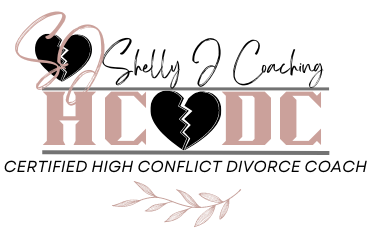Coping Strategies When Your Child’s Behavior Triggers You.
Parenting can be challenging, especially when your child’s behavior mirrors that of an abusive, narcissistic parent. These behaviors can be deeply triggering, bringing up past pain and trauma. And, it can be even harder to refrain from blaming your child.
Today I’d like to offer some help in dealing with this situation. Here’s a guide on what you can do when you find yourself triggered by your child’s behavior.

Steps to Manage Your Triggers
Pause and Breathe Techniques
When you feel triggered, take a moment to pause and practice deep breathing. You will be surprised how well simple breathing with intention helps you through difficult emotions and triggers. Here is a short list of some breathing techniques you can try out.
For more ideas, CLICK HERE.
- Slow breathing: Close your eyes and imagine yourself in a calm place. Breathe in slowly for a count of three, and then breathe out slowly for a count of three.
- 4-7-8 breathing: Inhale slowly for a count of four, hold your breath for a count of four, then exhale slowly and steadily for a count of eight.
- 5/5 breathing: Take slow, deep breaths in a 5/5 cadence, inhaling for a count of five and exhaling for a count of five.
- 4-2-6 breathing: Inhale slowly for a count of four, hold your breath for a count of two, then exhale slowly and steadily for a count of six.
- Five-finger breathing: Place the index finger of your tracing hand at the bottom of your thumb and slowly move your finger up to the tip. As you move your finger up, take a slow breath in.
Implement a Grounding Technique
Ground yourself by focusing on your breath to regain a sense of calm. When you are triggered by a traumatic memory, your brain and body go back to that moment when the abuse happened. This is like reliving the traumatic experience over and over again.
Grounding techniques are small activities you can do to help bring you back to the present moment from the traumatic memory of the past. This will help you realize the trigger is only a memory and that you are safe in the here and now.
Grounding involves using your 5 senses of taste, touch, sight, sound, and smell to re-center yourself back to the present moment. It includes being mindful of your breathing and focusing on the activity you are doing.
CLICK HERE for ideas on grounding techniques.
Manage your Mind
Be mindful of what your thoughts are around your trigger and what you are making it mean. We can easily get sucked into catastrophizing what is happening and add more layers of difficult emotions on top of the triggered emotions we are already experiencing. Pull yourself out of negative thinking patterns with compassionate, loving words you express to yourself to counter negative thought loops.
Acknowledge Your Feelings
Recognize and validate your emotions without judgment. Be curious and compassionate with yourself. Understand that it’s normal to feel triggered, and it’s okay to take a step back.
Identify the Trigger
Pinpoint what specific behavior or situation triggered you. Understanding the trigger can help you develop strategies to manage it in the future.
Communicate Calmly
Approach your child calmly and express your feelings in an age-appropriate way. It is perfectly normal and healthy to walk away for a moment to ground yourself, breathe, and re-center yourself before interacting with your child.
Use “I” statements to explain how their behavior affects you without placing blame.
Set Clear Boundaries
Establish and enforce clear, consistent boundaries for acceptable behavior. This is more than discipline. Make sure your child understands the consequences of crossing these boundaries and why the behavior is hurtful.
Practice Self-Care
Engage in activities that help you relax and recharge, such as exercise, meditation, or hobbies. Prioritize your well-being to maintain emotional balance and resilience.
CLICK HERE for self care ideas.
Seek Professional Help
Consider therapy or counseling to address your triggers and develop coping mechanisms. A professional can provide guidance and support tailored to your specific situation.
Teaching Your Child Healthier Behaviors
While managing your triggers, it’s also important to guide your child towards healthier behaviors:
– Role Modeling: Demonstrate positive behaviors and healthy communication.
– Positive Reinforcement: Praise and reward your child for displaying good behavior.
– Open Dialogue: Discuss the impact of their actions and encourage empathy and understanding.
Moving Forward
Coping with triggers is a journey that requires patience, self-awareness, and support. By taking proactive steps to manage your reactions and guiding your child with love and consistency, you can create a healthier dynamic for both you and your child.
